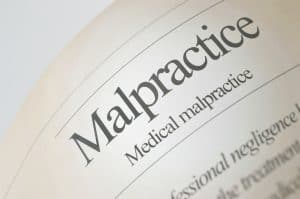Have you ever wondered if a medical mistake might be grounds for legal action? You’re not alone. Many people are unsure where to turn when they believe a healthcare professional’s negligence has caused them harm.

This article isn’t just about navigating the legalities of medical malpractice; it’s about empowering you. It will break down what constitutes malpractice, the key elements for a winning lawsuit, and the crucial role of seeking legal counsel.
What Is Medical Malpractice?
Medical malpractice arises when practitioners fall short of established professional standards, potentially causing patient harm. This can manifest through either inaction or improper action. The results of such lapses can be fatal, as diversified as worsened conditions, life-changing injuries, or even death. Given the severity of these conditions and the complexity of the legal issues at stake, it is very important that those affected seek competent legal representation. In such cases, it’s crucial to choose the right medical malpractice lawyer in Chicago or elsewhere to help navigate the legal complexities and seek justice for the harm caused.
Elements Of A Medical Malpractice Claim
Understanding the elements of a medical malpractice claim is crucial for determining whether you have a viable case. Here are the essential elements:
Duty of Care
The cornerstone of a medical malpractice claim is establishing that a duty of care existed between the healthcare provider and the patient. This duty is established by the doctor-patient relationship, formed when a healthcare professional agrees to diagnose or treat a patient.
Once this relationship is established, the provider is legally obligated to adhere to the standards of practice that are accepted in the medical community. The duty of care means the provider must act in a manner that a reasonably competent professional with similar training and experience would under similar circumstances.

Breach of Duty
A breach of duty occurs when a healthcare provider fails to meet the established standard of care. This means the provider acted differently than a reasonably competent professional would have in the same situation. Breaches can take many forms, including misdiagnosis, delayed diagnosis, surgical errors, improper medication administration, and failure to inform the patient of the risks associated with a procedure or treatment.
Expert testimony is usually required to prove a breach of duty. An expert witness, typically another healthcare provider, will testify that the standard of care was not met in the specific circumstances of the case.
Causation
Causation is the link between the breach of duty and the harm suffered by the patient. The plaintiff must demonstrate that the healthcare provider’s medical negligence directly caused the injury or worsened the patient’s medical condition. This is often the most challenging element to prove in a medical malpractice lawsuit.
There are two components to causation: direct causation and proximate cause. Direct causation means that the injury would not have occurred but for the provider’s actions. Proximate cause refers to the foreseeability of the injury due to the breach. The patient must show that the harm was a foreseeable outcome of the provider’s negligent actions.
Damages
Damages in a medical malpractice claim can be economic, non-economic, or, in rare cases, punitive. Economic damages include medical bills, lost wages, and other financial costs incurred due to the injury. Non-economic damage covers pain and suffering, emotional distress, loss of enjoyment of life, and other subjective harms.
In cases of gross negligence or willful misconduct, punitive damages may be rewarded to deter similar behavior in the future. The plaintiff must meticulously document all damages, including keeping records of medical expenses, income lost due to inability to work, and detailed accounts of the impact on their daily lives.
Legal Recourse For Victims
Victims of medical malpractice have the right to seek legal recourse by filing a lawsuit against the responsible healthcare provider. This typically involves the following steps:
Consulting with a Medical Malpractice Attorney
If you suspect medical malpractice, seeking guidance from a seasoned medical malpractice attorney is crucial. These legal professionals can be your advocate, offering expert advice and evaluating the merits of your case. Through a thorough review of medical records and a detailed understanding of your situation, the attorney can advise on the most effective path forward.
Filing a Complaint
If your attorney establishes a strong case, they’ll file a formal complaint with the court. This document details the allegations against the healthcare provider, specifying how their actions (or inactions) deviated from the standard of care and resulted in your harm. The complaint formally initiates the lawsuit and notifies the defendant.
Discovery Phase
The discovery phase is a crucial stage in medical malpractice lawsuits, serving as a period for information exchange. Both parties gather evidence to substantiate their claims and defenses. This process typically involves exchanging medical records, taking sworn statements (depositions) from relevant individuals, and acquiring expert testimony to establish the standard of care and any deviations from it.
Settlement or Trial
Negotiated settlements are a common resolution for medical malpractice cases. This avoids the complexities of trial while offering the plaintiff compensation. In these discussions, the defendant doesn’t admit fault but agrees to a financial settlement. If an agreement isn’t reached, the case goes to trial. Here, both parties present evidence and arguments before a judge or jury who determines the outcome.
Conclusion
While this guide has equipped you with valuable knowledge, remember that it’s not a substitute for professional legal counsel. Medical malpractice cases are intricate, and laws differ from state to state. To navigate the legal landscape effectively and determine the best course of action, consider scheduling a consultation with a qualified medical malpractice attorney.





